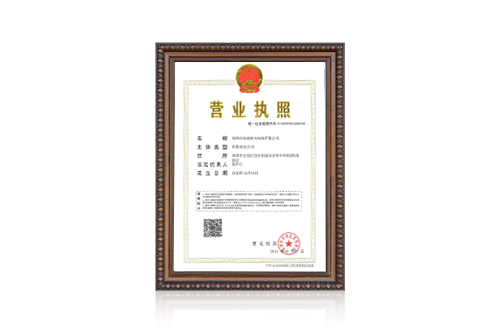Lithium-ion battery principle and process flow 1. Principle 1.0 positive
electrode structure LiCoO2 (lithium cobalt oxide) + conductive agent (acetylene
black) + binder (pVDF) + current collector (aluminum foil) positive electrode
2.0 negative electrode structure graphite + conductive agent (acetylene black)
)+Thickener (CMC)+Binder (SBR)+Current collector (copper foil) Negative
electrode 3.0 Working principle 3.1 Charging process
The power supply charges the battery. At this time, the electrons e on the
positive electrode run to the negative electrode through the external circuit.
The positive lithium ions Li+ "jump" into the electrolyte from the positive
electrode, "crawl" through the winding holes in the diaphragm, and "swim" "It
reaches the negative pole and is combined with the electrons that have already
run over. The reaction that occurs on the positive electrode is LiCoO2 =
charging = Li1-xCoO2 + Xli++Xe (electrons) and the reaction that occurs on the
negative electrode is 6C +
Discharge includes constant current discharge and constant resistance
discharge. Constant current discharge actually involves adding a variable
resistor in the external circuit that changes with the voltage. The essence of
constant resistance discharge is to add a resistor to the positive and negative
terminals of the battery to allow electrons to pass. It can be seen that as long
as the electrons on the negative electrode cannot run from the negative
electrode to the positive electrode, the battery will not discharge. Both
electrons and Li+ move at the same time, in the same direction but in different
paths. During discharge, the electrons run from the negative electrode through
the electronic conductor to the positive electrode. The lithium ions Li+ "jump"
into the electrolyte from the negative electrode and "crawl" across the
separator. small hole, "swim" to reach the positive electrode, and combine with
the electrons that have run over long ago. 2. Process flow
3. Battery defective items and causes: 1. Reasons for low capacity: a. The
amount of attached materials is too small; b. The amount of attached materials
on both sides of the pole piece is greatly different; c. The pole piece is
broken; d. The electrolyte is low; e. Electrolysis The liquid conductivity is
low; f. The positive and negative electrodes are not matched properly; g. The
porosity of the separator is small; h. The adhesive ages and the attachments
fall off; i. The roll core is too thick (not dried or the electrolyte is not
penetrated) j. It is not fully charged when dividing the capacity; k. The
positive and negative electrode materials have small specific capacities. 2.
Reasons for high internal resistance: a. The negative electrode piece and the
pole lug are weakly welded; b. The positive electrode piece and the polar lug
are weakly welded; c. The positive electrode lug and the cap are weakly welded;
d. The negative electrode lug and the shell are weakly welded; e. The rivets and
The pressure plate contact internal resistance is large; f. No conductive agent
is added to the positive electrode; g. The electrolyte does not contain lithium
salt; h. The battery has been short-circuited; i. The porosity of the separator
paper is small. 3. Reasons for low voltage: a. Side reaction (decomposition of
electrolyte; impurities in the positive electrode; presence of water); b.
Failure to form a safe SEI film; c. Leakage of the customer's circuit board
(referring to the customer's processing and delivery Returned cells); d. The
customer did not spot weld as required (cells processed by the customer); e.
Burrs; f. Micro short circuit; g. Dendrites were produced in the negative
electrode. 4. The reasons for over-thickness include the following: a. Air
leakage in the weld; b. Decomposition of the electrolyte; c. Undried moisture;
d. Poor sealing of the cap; e. The shell wall is too thick; f. The shell Too
thick; g. The roll core is too thick (too many attachments; the pole piece is
not compacted; the diaphragm is too thick). 5. The causes are as follows:
a. Not well formed (the SEI film is incomplete and dense); b. The baking
temperature is too high → the binder ages → stripped; c. The negative electrode
specific capacity is low; d. There are more positive electrode materials and
less negative electrode materials; e .The cap leaks and the weld leaks; f. The
electrolyte decomposes and the conductivity decreases. 6. Explosion a. The
sub-capacity cabinet is faulty (causing overcharging); b. The diaphragm closing
effect is poor; c. Internal short circuit 7. Short circuit
a. Material dust; b. Broken when loading the shell; c. Scratch (the small
diaphragm paper is too small or not padded properly); d. Uneven winding; e. Not
wrapped properly; f. There are holes in the diaphragm; g. Burrs
8. Open circuit a) The pole lug and the rivet are not welded well, or the
effective solder joint area is small; b) The connecting piece is broken (the
connecting piece is too short or is welded too far down when spot welding with
the pole piece)
Read recommendations:
LR6
How to restore the use of energy storage lithium batteries when they cannot be charged?18650 battery
402030 battery.Range of charging voltage for lithium iron phosphate battery packs
51.2v solar energy storage battery pack
18650 battery pack company











































 360° FACTORY VR TOUR
360° FACTORY VR TOUR
 Whatsapp
Whatsapp
 Tel
Tel Email
Email TOP
TOP